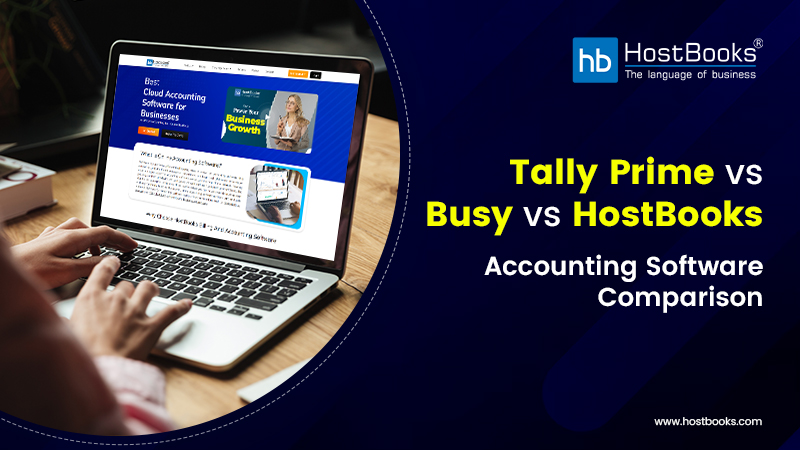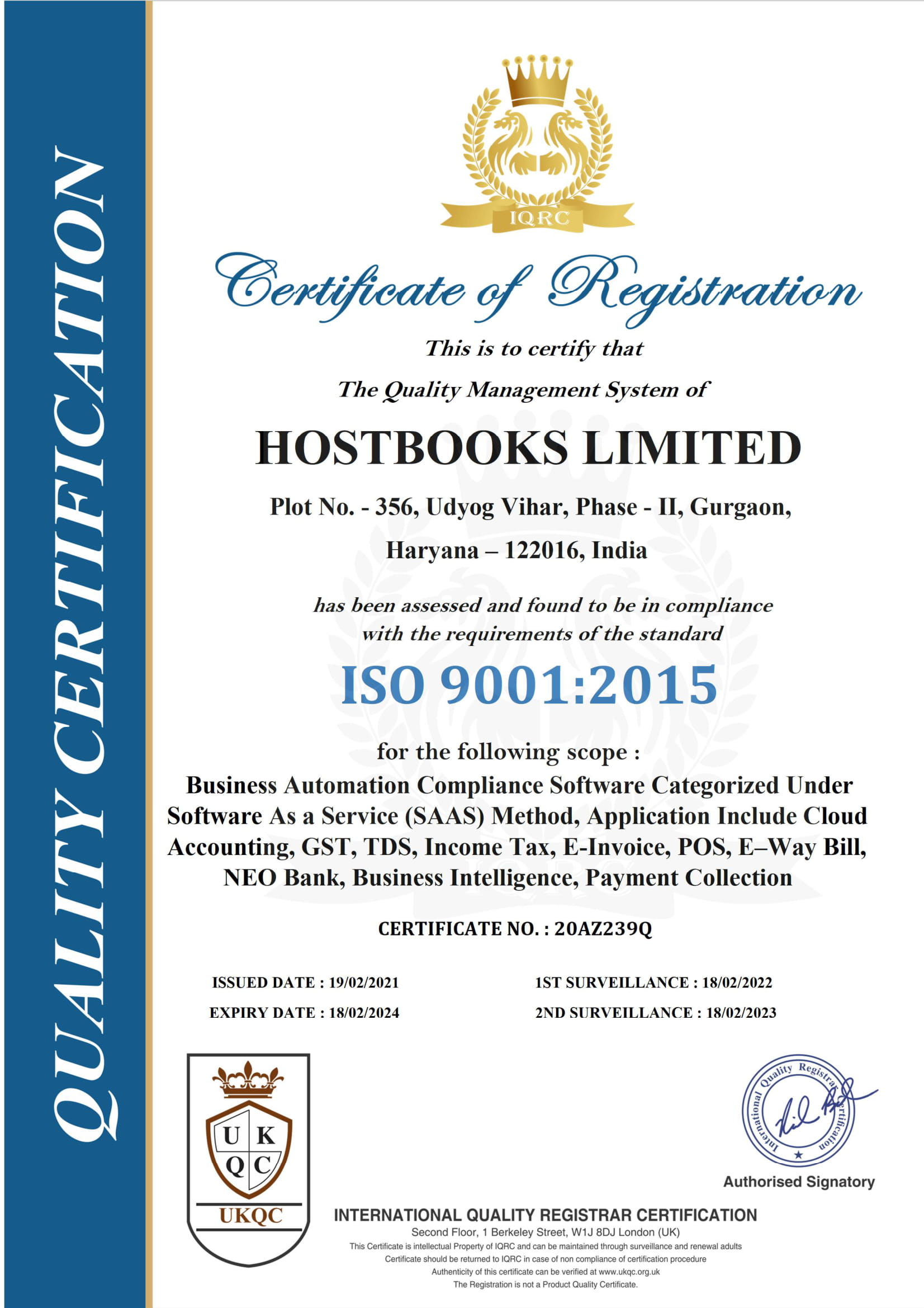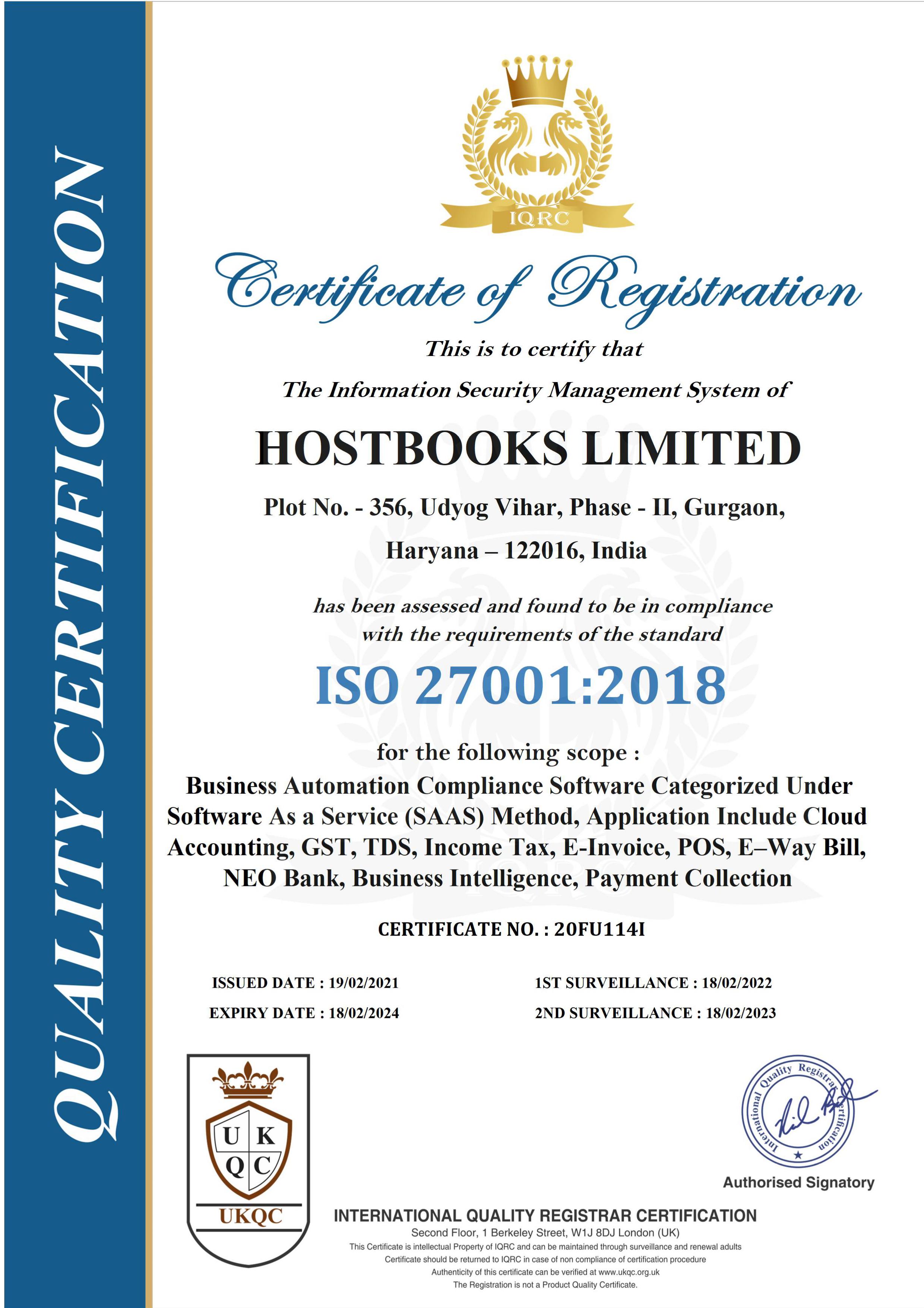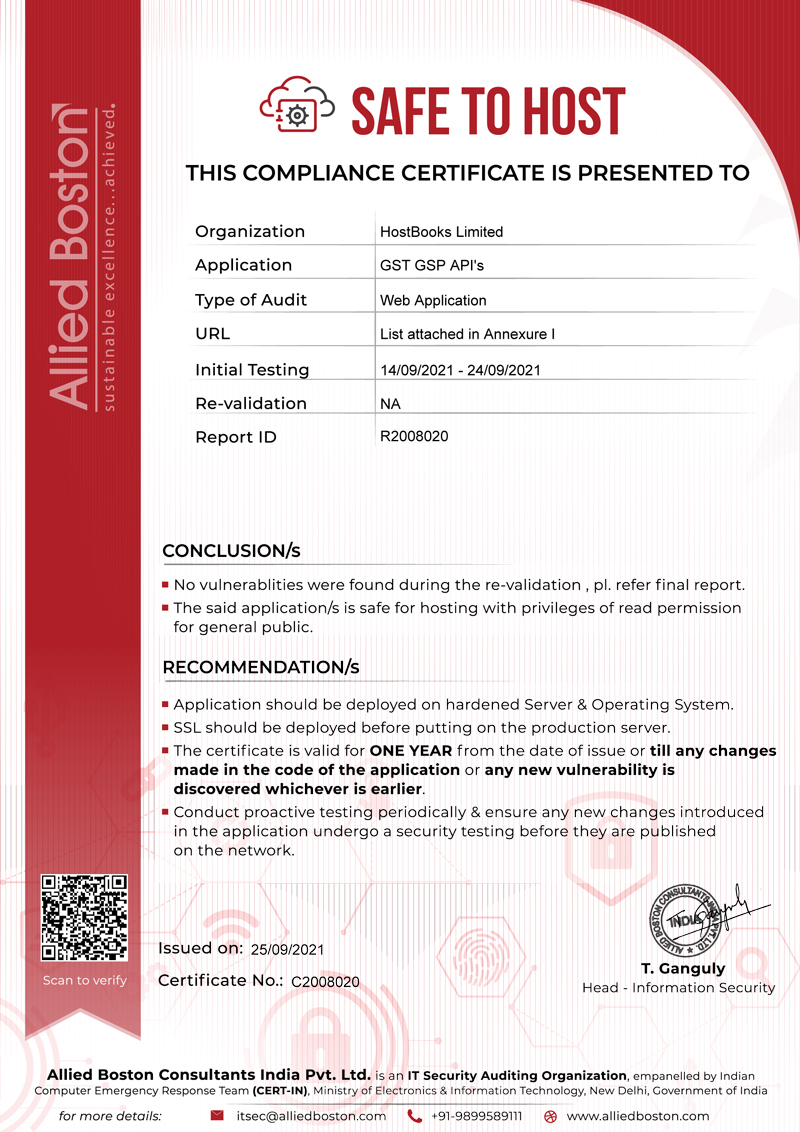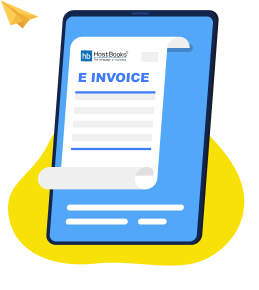
Tally Prime VS. Busy VS. HostBooks Accounting Software Comparison
March 20, 2023Sales Entry in Tally Prime 2024: Item, Voucher, Accounting Invoice Method
October 5, 2023Purchase is one of the most common entries passed by accountants. Here are the steps to pass Purchase entry in Tally Prime in Voucher Mode.
- 1. Got to “Gateway of Tally”.
- 2. Click on “Accounting Vouchers” Section OR Press “Alt+V” on Keyboard.
- 3. Click on “F9: Purchase” on the Button Bar OR Simply Press the F9 Key.
- 4. Press Ctrl+H to Choose the Voucher Mode as “As Voucher”.
- 5. Debit the Purchase Account.
- 6. Debit the GST Input Tax Accounts.
- 7. Credit the Party Account or Cash Account.
- 8. Press “CTRL+A” to Save the Entry.
This is passing purchase entry in Voucher Mode, it’s important to note that you can’t maintain item wise stock (by default) and auto debit GST in this mode of purchase entry.
There are 3 different methods of passing Tally entry–
- Voucher Mode: General Purchases, without Inventory, Bulk Entries, Consumables and purchase of items not directly for trading.
- Accounting Invoice Method: Entry without maintaining stock items or inventory with GST.
- Item Invoice Mode: Item wise purchase entry with inventory details.
We will discuss passing purchase entry in Tally with GST in all these modes – with when to use each mode, ledgers required and step by step details along with screenshots.
However, this tutorial is written from scratch for those who are trying to pass purchase entry in Tally or any other accounting software for the first time. Therefore, we would discuss the specifics of purchase and purchase entry along with purchase entry with GST before we go into the steps to pass the entry in Tally.
You can skip the section if you already have your concepts clear. Below is the detailed summary of each section.
| Section | Details |
|---|---|
| Intro |
What is Purchase Entry? Basic Steps to pass Purchase Entry in Tally prime as Voucher Mode. Introduction to different methods of purchase entry in Tally. Flow of Article for Better Read. |
| Purchase Entry – Importance, Types and Journal Entry |
What is purchase entry and why its passed? Types of Purchases Details of Purchase Entry Journal entry for purchase |
| Purchase Entry with GST |
Introduction to GST (goods and Services Tax) in India. Components of GST Input Tax credit (ITC) and its importance. Journal entry for purchase with GST with Example |
| Purchase Entry with GST |
Introduction to GST (goods and Services Tax) in India. Components of GST Input Tax credit (ITC) and its importance. Journal entry for purchase with GST with Example |
| Voucher Method |
When to use Voucher Mode and its prerequisites. Step by Step Guide |
| Accounting Invoice Method |
When to use Accounting Invoice Voucher Mode? Its prerequisites- required ledgers. Step by Step Guide |
| Item Invoice Method |
Overview When to use Accounting Invoice Voucher Mode and its prerequisites. Enabling inventory features and prerequisites. Steps to pass item-wise purchase entry in Tally Prime. |
| Creating Stock Items |
Importance of stock groups, units of measurement, and GST details. Steps for creating stock items in Tally Prime. |
| Conclusion |
Summary of the Entire article |
| FAQ Section |
All Important queries related to passing Purchase Entry in Tally |
Purchase Entry: Importance, Types and Journal Entry
Skip this section if you already know about Purchase and its journal entry.
A Purchase Entry, in accounting, is a transaction recording the acquisition of goods or services for sales/services by a business from an external entity.
Purchase vs Expense Vs Fixed Asset Purchase
Most people often confuse expenses with purchase which could lead to errors. Although these have similar journal entries, it might affect your Balance sheet representation.
“Purchase” is the acquisition of goods or services recorded as an inventory or consumable to be sold or directly used in rendering the services. – Passed as purchase entry
“Expense” represents buying items or services that is not directly in connection with the core business of the entity. – Expense Entry
“Fixed Asset Purchase” means buying assets or items that are to be used by the business over the years. – Journal Entry to capitalize the purchase
Example:
If you have a stationary business and you buy pens from a vendor to be sold, then it’s a purchase. However, if you are a restaurant owner who buys pen for making bills, it’s an expense not a purchase.
Why is a Purchase Entry Passed?
Purchase entry is passed for 3 major reasons.
- 1. Recording Transactions
- 2. GST Compliance and ITC
- 3. Inventory Updation
Journal Entry for Purchase
The journal entry for a purchase typically involves two accounts: Purchase Account and Party Account (usually a vendor or supplier).
- Debit the Purchase Account: This represents the cost of the goods or services purchased and increases the purchase A/c along with inventory/stock of purchased item.
- Credit the Party Account: This records the liability created by the purchase, acknowledging that you owe money to the supplier.
Purchase A/c Dr _________
To Party / Cash or Bank A/c Cr ______________
Details in a Purchase Entry: A comprehensive purchase entry should include the following details:
- Date
- Invoice Number
- Supplier/Vendor Details
- Description of gift purchased.
- Quantity
- Rate
- Total Amount
Service and Goods Purchase Entry:
- Goods Purchase Entry: This involves the acquisition of physical items or inventory that will be sold or used in the business. Goods purchase entries often involve recording details such as quantity, unit price, etc. as inventory.
- Service Purchase Entry: This records the procurement of services rather than physical goods. It does not include inventory /stock items.
Purchase Entry with GST
GST, or Goods and Services Tax, is a comprehensive indirect tax levied on the supply of goods and services in India. Every time you purchase a good from a registered dealer, you would be paying GST which you can claim as Input Tax Credit (ITC) to reduce your GST liability.
While passing Purchase entry you would need to book the GST Paid as Input tax along with entry. Input Tax is to be debited while passing entry as it’s a current asset.
Steps for Passing Purchase Entry With GST
Passing journal entry of purchase with GST is like normal purchase entry with following addition.
- 1. GST paid on purchase is to be debited as Input Tax
- 2. It is important to book Input tax in different ledgers depending upon the sales.
- 3. Book SGST Input Tax, CGST Input Tax and IGST Input tax separately depending on the state of buyer due to the rules of utilization of Input tax Credit.
- 4. Here are the ledgers you would need to book Input Tax (as Current Asset)
- CGST Input Tax A/c – For intrastate Sales (within the same state)
- SGST Input Tax A/c– For intrastate Sales (within the same state)
- IGST Input Tax A/c– For interstate Sales (within the different state)
Purchase GST Entry for Intrastate sale
Purchase A/c Dr ___________
CGST Input A/c Dr ___________
SGST Input A/c Dr ___________
- To Party A/ Cr ___________
Note: Use IGST Input A/c for Interstate purchases.
Example of Purchase Entry with GST (Interstate)
Your company, located in Maharashtra, purchases goods worth Rs. 10,000 with a GST rate of 18 from Business A, located in Delhi.
Purchase Entry
Purchase A/c Dr 10,000
IGST Input A/c Dr 1,800
To
Business A/c 11,800
Purchase Entry in Tally Prime- Voucher Method
Voucher mode is a straightforward way to record purchase transactions in Tally. It provides users to enter both debit and credit ledgers, enabling accountants the flexibility to pass consolidated and adjustment entries quickly.
Besides you have the choice to add stock items and GST in the when to use Voucher Mode:
- When you don’t need to maintain item wise details of your purchases
- When Inventory or stocks are not required
- Passing Purchase Entries in Bulk
- Service Received Entries
- Purchase of consumables
- Fixed Assets purchases
Before you start Passing purchase journal entry in tally Prime in Voucher Mode, you will need following ledgers.
Purchase Account Ledger: This ledger represents the account where you’ll record the cost of your purchases. Multiple sub-ledgers can be created for Interstate Purchases, local purchases, service purchases, etc. depending on requirement.
GST Input Tax Ledgers: These ledgers are essential for accounting the GST input tax component of your purchase transactions. You must have the following Ledgers
- CGST Input Tax A/c
- SGST Input Tax A/c
- IGST Input Tax A/c
Optional: Besides you can also create rate wise account if you need organized tacking of GST. Example CGST Input Tax @ 9% or IGST Input Tax @ 18%. (optional)
Party A/c: The party ledger represents the supplier from whom you’re making the purchase. If you make purchases in Cash or Bank, you will need these ledgers which already exist in most cases.
Step to Pass Purchase entry in Voucher Mode in Tally Prime
Access Purchase Voucher:
- You can do this by pressing Alt+G (Go To), then selecting Create Voucher, and finally pressing F9 (Purchase).
- Alternatively, from the Gateway of Tally, navigate to Vouchers and press F9 (Purchase).
Press Ctrl+H (Change Mode) to select the desired voucher mode, which, in this case, is “As Voucher.”
Press F9 and Select “Purchase” for Goods or “Services Received” for service Purchase
Enter the invoice number and date exactly as they appear on the supplier’s bill.
Supplier Details
- Select the Supplier A/C to be credited and input the Exact Acc
- For cash purchases, select “Cash” or “Bank.” For credit purchases, choose the appropriate supplier ledger.
- You can create a new ledger by pressing Alt+C if needed.
- Enter total Amount to be paid.
Press Enter and choose the Purchase A/c and enter the Net Purchase Amount
Press Enter and Select the required Input Tax Account (CGST Input Tax, SGST Input Tax, etc)
Press Ctrl+A to save your purchase voucher entry.
There might be other details asked for such as supplier details, delivery details, supplier details, reference bill number, narration etc.. However, all of these are optional and fill only those which are required.
Purchase Entry in Tally Prime- Accounting Invoice Method
Accounting invoice method is almost same as the Voucher Entry method. The only difference is you don’t get the flexibility to input both credit and debit entries. It is useful to record a single invoice without maintaining stock/ inventory details.
When to use Voucher Mode:
- When you don’t need to maintain stock/ inventory
- Service Received Entries
- Purchase Account Ledger
- GST Input Tax Ledgers
- Party Account / Bank Account / Cash Account
- You can do this by pressing Alt+G (Go To), then selecting Create Voucher, and finally pressing F9 (Purchase).
- Alternatively, from the Gateway of Tally, navigate to Vouchers and press F9 (Purchase).
- For cash purchases, select “Cash” or “Bank.” For credit purchases, choose the appropriate supplier ledger.
- You can create a new ledger by pressing Alt+C if needed.
- Go to the “Gateway of Tally.”
- Navigate to “F11: Features” and select “F1: Inventory.”
- On the “Company Operations Alteration” screen, provide the necessary details.
- Enable the options you require, such as stock management, classification, and order processing.
- Press “Ctrl+A” to save your changes.
- Unit of Measurement (UoM): Establish the units of measurement for your items as pcs, kg, litre, etc. You need to create this before you create Stock Items
- Stock Group: You can also create a group of stock items such as consumables, 18% GST item , etc. This helps in easy categorization of inventory.
- CGST Input Tax A/c
- SGST Input Tax A/c
- IGST Input Tax A/c
- You can do this by pressing Alt+G (Go To), then selecting Create Voucher, and finally pressing F9 (Purchase).
- Alternatively, from the Gateway of Tally, navigate to Vouchers and press F9 (Purchase).
- Press Alt+P (Print) and then hit Enter on “Current.”
- If necessary, preview the invoice by pressing I (Preview) before printing.
- To configure the invoice layout further, press F12 (Configure).
- Finally, press P (Print) to print the purchase invoice.
- Go to Gateway of Tally.
- Navigate to Inventory Info. > Stock Item > Create (under Single Stock Item).
- Provide the name of the stock item.
- Optionally, add an alias name for reference.
- Select the relevant stock group to classify the item.
- You can create a new group by pressing Alt+C if needed.
- Pick the unit of measure (UoM) applicable to the stock item.
- Create a new UoM with Alt+C if necessary.
- Set GST to “Applicable” if needed and enter GST details.
- Specify the rate of duty if applicable for excise calculations.
- If you have an opening balance for the stock item, provide quantity and rate details.
- The value will be calculated automatically based on your inputs.
Before you start Passing purchase journal entry in Accounting Invoice Mode, you will need following ledgers.
Step to Pass Purchase entry in Tally Prime in Accounting Invoice Mode
Image 3
1. Enter Purchase Voucher:
2. Press Ctrl+H (Change Mode) to select the desired voucher mode, which, in this case, is “As Accounting Invoice.”
3. Press F9 and Select “Purchase” for Goods or “Services Received” for service Purchase.
4. Enter the invoice number and date exactly as they appear on the supplier’s bill.
5. Select the Supplier A/C to be credited and input the total payable amount.
Press Enter and choose the Purchase A/c and enter the Net Purchase Amount
Press Enter and Select the required Input Tax Account (CGST Input Tax, SGST Input Tax, etc)
Press Ctrl+A to save your purchase voucher entry.
Purchase Entry in Tally Prime- Item Invoice Method
This is the most important method of passing purchase entry in Tally, as this is the only method to record the inventory and stock wise details of each item.
It is slightly complex to record entry in this method, as you would require a few details before you start recording purchases.
Before we start, this mode is not activated by default. Users need to enable Inventory option before entering purchases with inventory in Tally Prime.
Enabling Inventory Features in Your Business
Skip this if Inventory is already activated in your Tally Prime.
To enable the inventory features in your business, follow these steps:
Prerequisites:
You would need to create the following before you pass Item wise purchase entry in Tally Prime
1. Party Account: Set up the ledgers for Parties from whom you purchase along with their GST details and place of business.
Purchase Account: This ledger represents the account where you’ll record the cost of your purchases. Multiple sub-ledgers can be created for Interstate Purchases, local purchases, service purchases, etc. depending on requirement.
Items: Items that your businesses trade. You need to determine the HSN code and GST rate of each item along with its rate against each UoM. ( I have added detailed method on how to create new item after this section)
4. GST Input Tax Ledgers: These ledgers are essential for accounting the GST input tax component of your purchase transactions. You must have the following Ledgers.
Steps to enter item wise purchase entry in Tally Prime
Image 4
1. Open the Purchase Voucher in Tally Prime.
2. Press Ctrl+H (Change Mode) to select the required voucher mode, which, in this case, is “Item Invoice.”
3. Ensure that the invoice number and date match the corresponding sales bill from the supplier.
4. Specify the details of the supplier, including their name, address, and contact information.
5. For cash purchases, select “Cash” or “Bank.” For credit purchases, choose the appropriate supplier ledger.
6. If required, input receipt details such as receipt document number, bill of landing, destination, and more.
7. Select the purchase ledger that you’ve set up under Purchase Accounts.
8. Input the details of the stock items or services you’re purchasing. You can create new items or ledgers on the spot by pressing Alt+C.
9. Choose the stock item and specify the quantity. The rate will auto-fill if available, but you can manually enter the rate or amount if needed.
10. In the case of services, select the appropriate service ledger and enter the amount.
11. Select any extra ledgers, such as transportation charges, insurance, or discounts, if applicable.
12. Add any necessary remarks or narration.
13. Press Ctrl+A to save
Printing the Invoice:
Creating Stock Items in Tally Prime – Step by Step
Stock items in Tally Prime are the products your business deals with, whether you manufacture them or trade them. Managing stock items in Tally Prime is similar to handling ledger accounts in your financial transactions.
Image 5
Access Stock Item Creation:
Enter Stock Item Details:
Categorize in Stock Group:
Choose Unit of Measure (UoM):
GST and Duty (If Applicable):
Opening Balance (If Any):
Conclusion
This tutorial provided a concise guide to passing purchase entries in Tally Prime, covering three methods: Voucher Mode, Accounting Invoice Mode, and Item Invoice Mode. From step-by-step instructions for entering purchase transactions with GST, including journal entries for intrastate and interstate purchases.to the relevancy of each invoice mode, we have covered most of the aspects.
If you have any questions, feel free to mention them in the comments below.
FAQ Section
Q1. What is a purchase voucher?
A purchase voucher is an entry used to record the purchase of goods or services by a business. It typically includes details such as the date of purchase, supplier information, GST Paid, invoice number, and the amount paid.
Q2. What is a purchase invoice?
A purchase invoice is a document issued by a supplier to a buyer when goods or services are sold. It includes details of the items purchased, their quantities, prices, taxes, and the total amount due from the buyer.
Q3. Is purchase a debit or credit?
Purchase is recorded as a debit entry. When a business makes a purchase, it increases its expenses or asset accounts, which are represented as debit entries.
Q4. What is a purchase return?
A purchase return, also known as a purchase refund or return inwards, occurs when a business returns goods or services to a supplier due to issues like defects or incorrect shipments. It is recorded as a reduction in purchases and accounts payable.
Q5. What is the entry of a purchase?
The entry for a purchase typically involves. Purchase Account (debit) and the Party Account (credit).
Purchase A/C Dr ______
To
Party A/c ______
Q6. How to use GST in Tally?
To use GST in Tally, you need to configure GST-related settings in Tally’s taxation features. Press F12 in Gateway of Tally and turn on the GST feature.
Q7. Can you enter a purchase entry in Tally without maintaining an invoice?
Yes, you can enter a purchase entry in Tally without maintaining a detailed invoice. This is typically done in voucher mode, where you can record basic purchase transactions without itemized details.
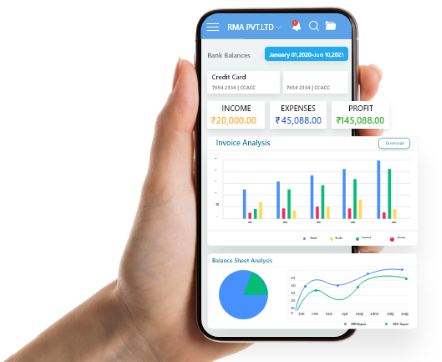
Try HostBooks
SuperApp Today
Create a free account to get access and start
creating something amazing right now!





